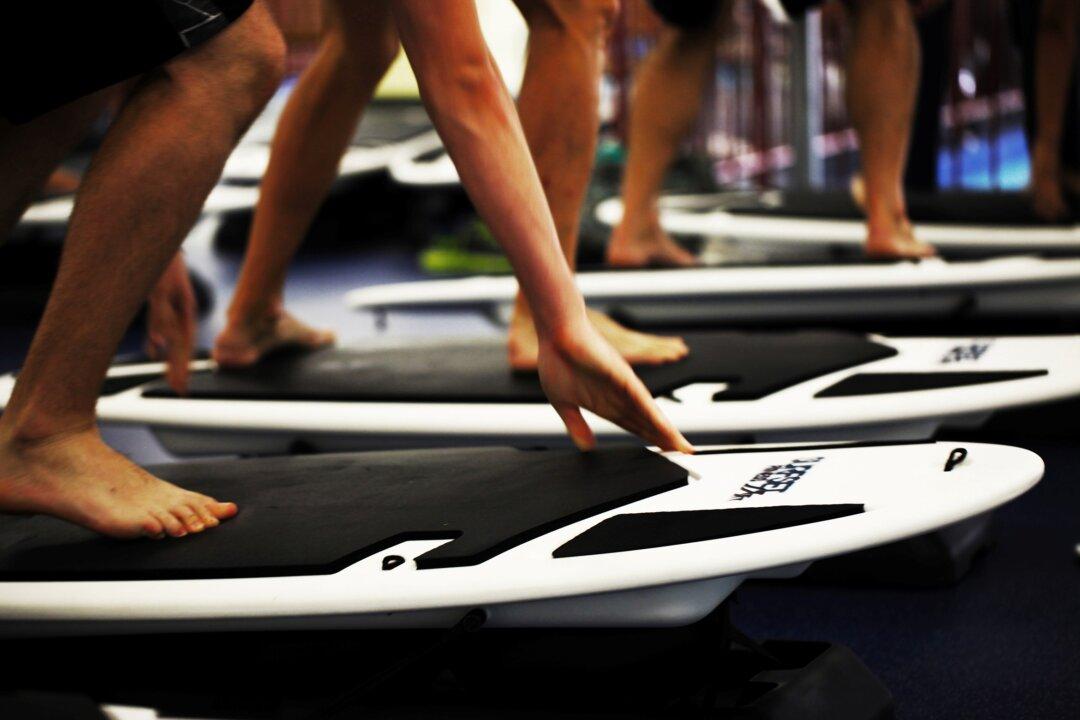Rapidly becoming popular around the globe, the sport of stand-up paddleboarding (SUP) is not only a great way to stay in shape, but can also be a great way to relieve stress.
A recent emergence from the Hawaiian surfing scene, SUP is a variant of surfing in which the surfer stands on top of the surfboard and uses a paddle to glide across the water’s surface.
SUP can be a challenging workout when you’re paddling to surf a wave. It can also be calming should you choose to paddle in a still body of water, such as a lake or pond, or you can ditch the paddle altogether and practice yoga on the board instead.
Images of people on stand-up paddleboards in tranquil waters with stunning backdrops have become commonplace; however, one does not need to be in an exotic location to do it. All that is required is a board, paddle, and a body of water.
Origins
The most recent origins of SUP date back to the 1940s when surf instructors in Waikiki, Hawaii, used stand-up paddleboards to get a better view of approaching wave sets, giving their surf students (lying prone on their surfboards) a heads-up as to where and when to paddle for and surf the incoming waves.
About 50 to 60 years later, professional surfers began using SUP as a method to stay in shape for big wave days during flat ocean days. Even the most diehard surfers will agree that they would rather SUP than stay out of their beloved ocean during so-called flat days. To surf, you need waves; to SUP, you simply need water.
My introduction to SUP came during one of those East Coast flat spells that occur every so often (much to the chagrin of surfers). I came to the beach intending to surf but had missed the small window of what could have been a rideable wave. A truck pulled up with what appeared to be five gigantic surfboards. The driver was about to give SUP lessons; he must have noticed my frown because he offered to let me try a SUP board and paddle. That’s all it took. SUP has since become my go-to recreation for flat ocean days as well as the catalyst for my recent obsession, SUP yoga.
SUP Yoga
It is important to note that one does not need to have surfed before to become a proficient SUP-er. As with any other sport, there are varying levels of aptitude, from the amateur SUP-er to the professional who races and is ranked. And despite the common misconception, one does not need to have impeccable balance. In calm waters, most people feel comfortable on a SUP board within an hour. Of course, the same cannot be said when practicing certain yoga poses (such as inversions and more advanced poses).
SUP yoga is a new trend that is sweeping the yoga and SUP world. Yogis delight in the extra challenge of practicing on a nonsedentary surface in a beautiful aquatic setting. It is perhaps the perfect balance of nurture and nature—nurturing your soul and body while taking in nature at its finest.
SUP pro, J.M. Kostalles, owner of Kostal Paddle in Port Washington, N.Y., surmises that SUP’s popularity is linked to the mind/body connection. According to him, “people feel good about being out in nature, in the water; it’s an excellent workout and a wonderful way to reduce stress.”
SUP boards and paddles can range in price from $500 to $1,500. Kostalles designs his own boards; in other words, he provides the specs/dimensions and has the boards shaped accordingly. Board dimensions vary depending on how they are used. For example, boards used for yoga are thicker than are boards used to surf waves.
The world of SUP has a little something for everyone, whether you are looking for a heart-racing exercise and thrills, a gentler workout, or a beautiful nature excursion. I find that SUP yoga incorporates all of those elements and I encourage people to find their own SUP passion and joy.
Elena Marks is a freelance writer specializing in health, fitness, fashion, and adventure travel. She is based in Port Washington, N.Y.



